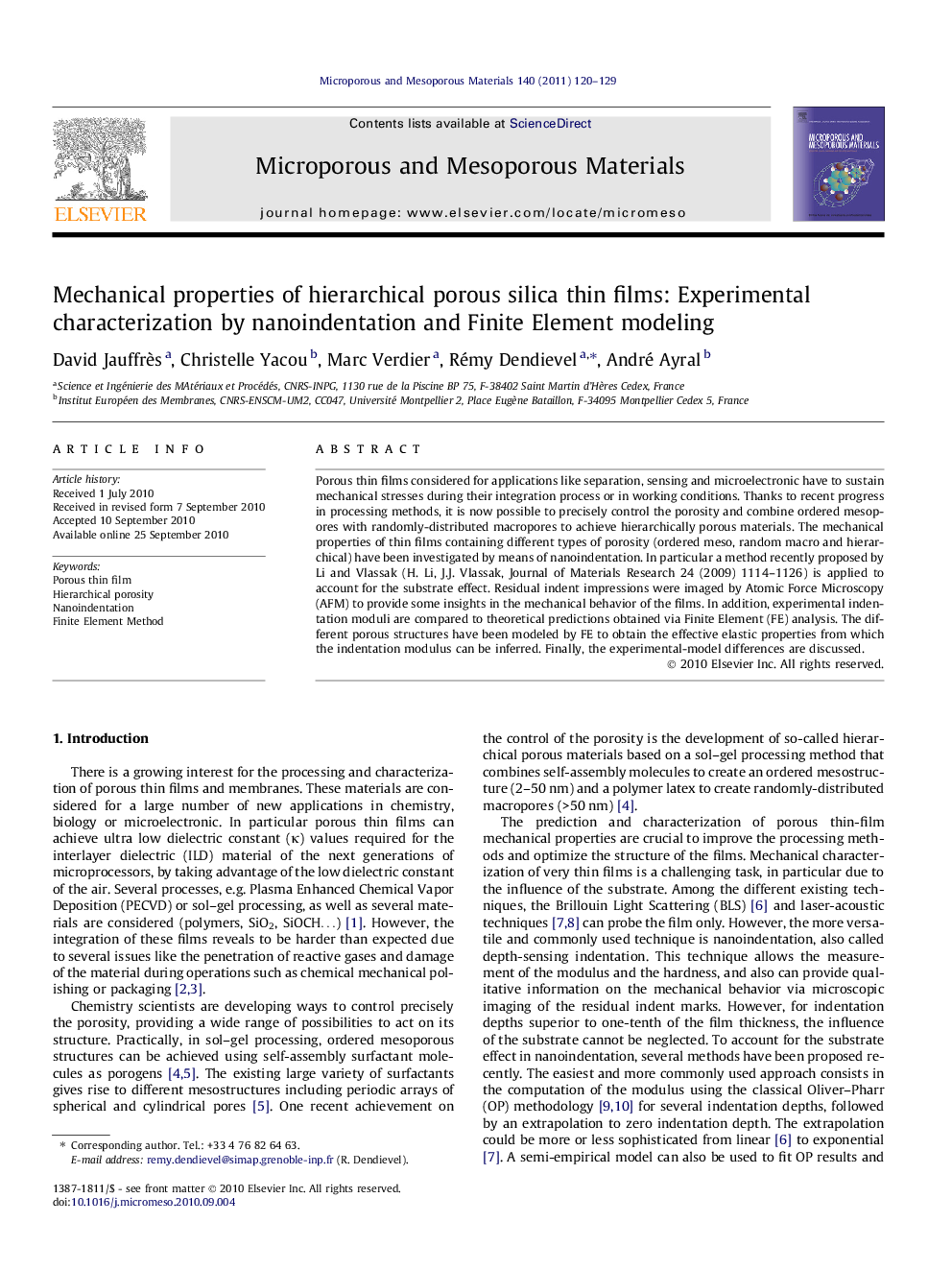| Article ID | Journal | Published Year | Pages | File Type |
|---|---|---|---|---|
| 74031 | Microporous and Mesoporous Materials | 2011 | 10 Pages |
Porous thin films considered for applications like separation, sensing and microelectronic have to sustain mechanical stresses during their integration process or in working conditions. Thanks to recent progress in processing methods, it is now possible to precisely control the porosity and combine ordered mesopores with randomly-distributed macropores to achieve hierarchically porous materials. The mechanical properties of thin films containing different types of porosity (ordered meso, random macro and hierarchical) have been investigated by means of nanoindentation. In particular a method recently proposed by Li and Vlassak (H. Li, J.J. Vlassak, Journal of Materials Research 24 (2009) 1114–1126) is applied to account for the substrate effect. Residual indent impressions were imaged by Atomic Force Microscopy (AFM) to provide some insights in the mechanical behavior of the films. In addition, experimental indentation moduli are compared to theoretical predictions obtained via Finite Element (FE) analysis. The different porous structures have been modeled by FE to obtain the effective elastic properties from which the indentation modulus can be inferred. Finally, the experimental-model differences are discussed.
Graphical abstractFigure optionsDownload full-size imageDownload as PowerPoint slideResearch highlights► FE model predicts lower moduli than nanoindentation estimations. ► Nanoindentation could overestimate the modulus because of densification. ► Mesoporous films have an elasto-plastic behavior. ► Macroporous and hierarchical films exhibit brittle pore collapse under the indenter. ► Mesoporous film are more promising than macro/hierarchical ones for ULK applications.
